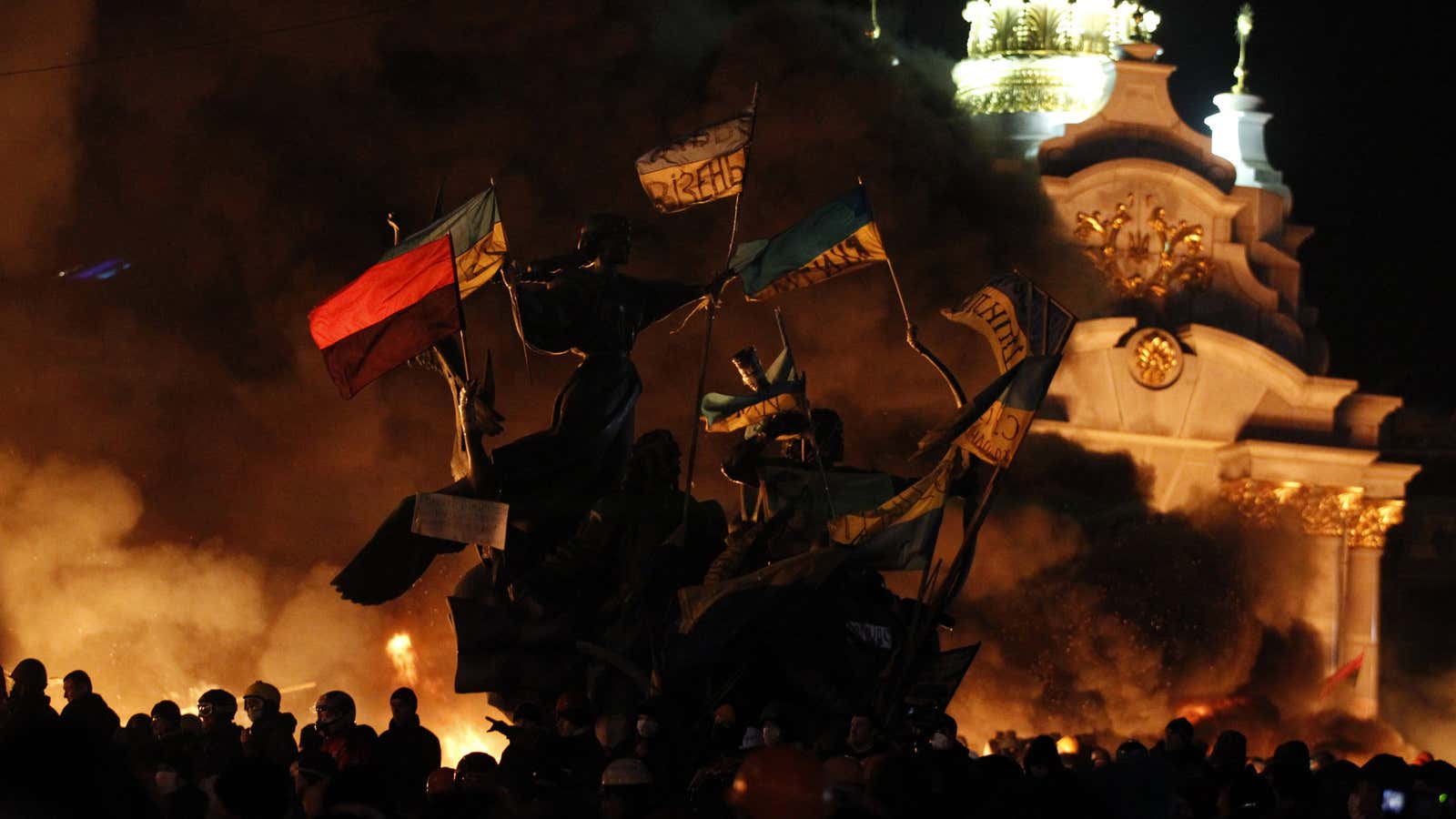In a ferocious repeat of the Soviet past, Ukrainian President Viktor Yanukovych is conducting one of the region’s deadliest political crackdowns of the last two decades. Whatever happens next—if he manages to serve out his last year in office, is ousted, or cuts a deal to stay on in a lesser capacity—he has joined the short list of the former Soviet Union’s most brutal leaders.
In a day of pandemonium on Tuesday, Yanukoych—egged on by Moscow—dispatched Berkut commandos and riot police in a savage offensive against the demonstrators who have occupied Kiev’s Independence Square for the last three months. His helmet-clad opposition, armed with clubs, stones, other makeshift weapons and a scattered few with sidearms, fought back. Estimates are that between 14 and 18 people were killed, mostly by bullets, including a half-dozen police. Fire and smoke engulfed central Kiev this morning, and the police will probably try again to clear the square today.
But there also seems very little doubt that Yanukovych will now complete however much time he has left in office under conditions he tried desperately to avoid—hanging on through a combination of harsh rule, loyal troops and the support of Russia.
The crackdown resembles the tactics of Soviet leader Mikhail Gorbachev when he was attempting to hold together the crumbling union. Among them: In 1989, troops killed 20 people protesting Soviet rule in Georgia. The following year, Soviet tanks rolled in against demonstrators in Azerbaijan, killing about 60 people. And in 1991, Soviet troops killed 14 protestors in Lithuania.
But similar acts of violence since the Soviet breakup are few. In 1993, some 150 people died when Russian President Boris Yeltsin attacked hard-liners holed up in government buildings. And in 2005, Uzbek dictator Islam Karimov—the most ruthless ruler in the region—killed several hundred people in what became known as the Andijan Massacre.
Otherwise, the region’s strongmen leaders—in Azerbaijan, Belarus, Georgia, Kyrgyzstan and Russia—have gotten by roughing up and arresting demonstrators, activists and journalists. Though it has seen a number of heinous murders, Ukraine itself has run some of the most democratically fair elections in the former Soviet period. When they have not appeared fair, the street has moved to make them so: Yanukovych himself was forced to step aside in his first run for the presidency in 2004 when the Orange Revolution erupted against his rigged, Moscow-backed election. Now he appears intent on going out again—or hanging onto office—in an all-too-familiar fashion.
